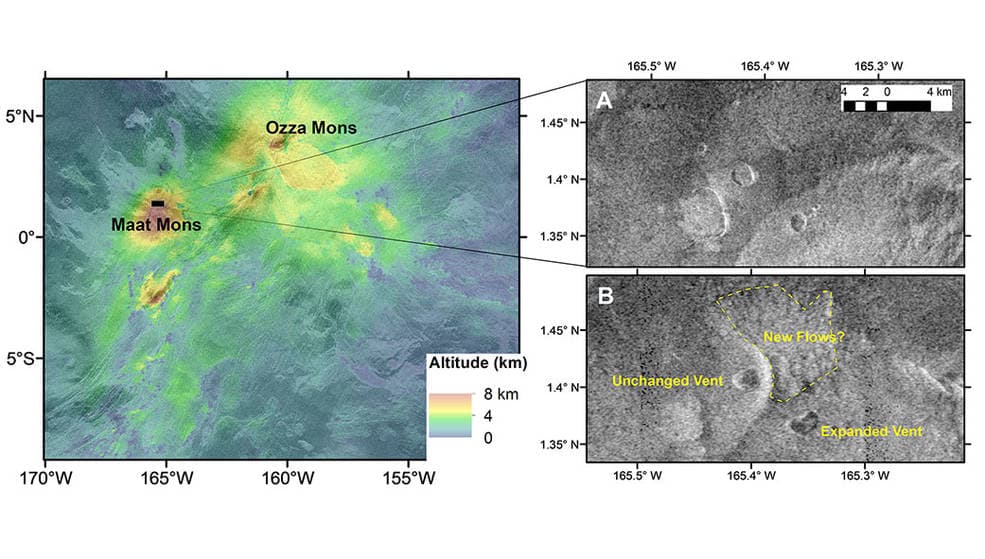After decades of speculation, astronomers have discovered the first direct evidence of volcanic activity on Venus. Radar images of Earth’s “twin” taken just a few months apart reveal a recent eruption.
While they may have started out quite similar, Venus and Earth evolved along very different lines. Modern Venus is home to a barren surface hot enough to melt lead, choking under a thick atmosphere of carbon dioxide and clouds of sulfuric acid. Whether this hellishness also includes vulcanism has been an open question for decades.
In a new study, astronomers have found direct evidence that volcanoes are still erupting on Venus. The team started by examining archival radar data gathered by NASA’s Magellan mission in the early 1990s, looking for locations that seemed to change between snapshots. And sure enough, within a few months one region underwent drastic shifts that looked suspiciously volcanic in nature.
The region in question is called Atla Regio and is home to two of Venus’s largest volcanoes – Ozza Mons and Maat Mons. A vent near the latter mountain seemed to change significantly between an image snapped in February 1991 and another in October that year.
The first time Magellan glided overhead, the vent was almost perfectly circular and covered about 2.2 sq km (0.8 sq mile). But by October, the same vent had doubled in size, changed shape and, most tellingly, seemed to have filled up with a lake of lava.

Robert Herrick/UAF
The study wasn’t quite as simple as just comparing two images, however – the two observations looked at the area from different angles, and were shot in low resolution. To examine the differences, the team had to develop computer simulations of various scenarios to see which ones fit the bill best.
“Only a couple of the simulations matched the imagery, and the most likely scenario is that volcanic activity occurred on Venus’ surface during Magellan’s mission,” said Scott Hensley, co-author of the study. “While this is just one data point for an entire planet, it confirms there is modern geological activity.”
We might not have to wait too long for further evidence to come in. NASA is planning to launch a new mission to Venus, called VERITAS, by the end of the decade. This will build a global 3D radar map of the planet in much higher resolution, scan it in near-infrared to determine the composition of the surface, and measure the gravitational field. Altogether, these instruments will help build a detailed picture of Venus’s geology.
The research was published in the journal Science.
Source: NASA
Source of Article